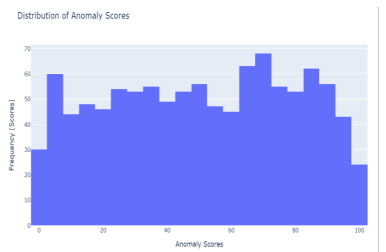Improving resilience and efficiency in the energy sector: A perspective on cybersecurity and renewable energy storage.

Submission to VIJ 2024-05-03
Keywords
- Cybersecurity, Renewable energy, Energy Sector, Resilience, Energy Sector Efficiency.
Copyright (c) 2024 Oluwadamilola Ogunleye, Sulaimon Adeniji, Valentine Onih, Yufenyuy Simo, Emmanuel Elom, Emmanuel Kanu, Abdul-Waliyyu Bello, Callistus Obunadike, Nnaji Chukwu, Oluomachi Ejiofor, Juliet Ogutu, Chinenye Obunadike, Tosin Clement, Somto Kizor-Akaraiwe

This work is licensed under a Creative Commons Attribution 4.0 International License.
Abstract
The study investigates how resilience and efficiency can be improved in the energy sector using cybersecurity. The main objective of the paper is to enable organizations in the energy sector to develop a robust framework to manage renewable energy storage effectively with little to no cost consequence because of cyberattacks. A survey data saved in the repository of Kaggle was extracted and utilized for the purpose of the study, it contains cybersecurity indicators such as anomaly score, log source, attack types, attacks severity, and response action, which were the features adopted for developing a model, while the target variable was renewable energy generation. A machine learning approach was adopted, with the Rsquared indicating that 61 % variation in renewable energy store is explained by the features included in the model. The study recommends that there should be an increased investment in cybersecurity structure to safeguard energy systems against cyber threats. Also, stakeholders should implement comprehensive training programs to enhance cybersecurity awareness and skills of personnel working in the energy sector.
References
- R. IREA, “International Renewable Energy Agency.,” Renewable Capacity Statistics., 2021.
- R. IEA, “Cybersecurity and the Energy Sector: Policy Recommendations.,” IEA Publications, 2021.
- N. Chukwu et al., “Resilient Chain: AI-Enhanced Supply Chain Security and Efficiency Integration,” Int. J. Sci. Manag. Res., vol. 07, no. 03, pp. 46–65, 2024, doi: 10.37502/IJSMR.2024.7306.
- A. Johnson and M. Lee, “Cybersecurity Threats to Energy Infrastructure: A Comprehensive Analysis.,” Energy Policy Rev., vol. 12, no. 4, pp. 112–129, 2019.
- J. Smith, “Enhancing Resilience in Critical Infrastructure: A Review of Challenges and Strategies.,” J. Energy Secur., vol. 8, no. 2, pp. 45–62, 2020.
- C. Wang and Y. Zhang, “Advances in Renewable Energy Storage Technologies: A Comprehensive Review.,” Renew. Energy J., vol. 25, no. 3, pp. 211–230, 2021.
- O. R. I. Eduardo and R. Luis, Brief Overview of Cybersecurity Issues on Smart Power Systems Energy Storage Association. 2015.
- C. Scott and M. Brian, “4 top cybersecurity considerations in the renewable energy sector. Retrieved from,” Feb. 2023. [Online]. Available: https://www.cohnreznick.com/insights/4-cybersecurity-considerations-renewable-energy
- O. Adekunle et al., “A Review of Cybersecurity as an Effective Tool for Fighting Identity Theft across United States,” Int. J. Cybern. Inform., vol. 12, no. 5, pp. 31–42, Aug. 2023, doi: 10.5121/ijci.2023.120504.
- T. P. McAllister and C. E. Irvine, “Cyber resilience for critical infrastructure systems.,” Proc. IEEE, vol. 104, no. 5, pp. 915–924, 2016.
- B. Schneier, Data and Goliath: the hidden battles to collect your data and control your world, First published as a Norton paperback 2016. New York London: W.W. Norton & Company, 2016.
- M. E. Whitman and H. J. Mattord, Principles of information security, Seventh edition. Boston, MA: Cengage, 2022.
- S. K. Ransbotham and P. K. Prentice, “Beyond Cybersecurity: Protecting Your Digital Business.,” MIT Slogan Manag. Rev., vol. 56, no. 4, pp. 20–23, 2015.
- R. USEIA, “U.S. Energy Information Administration: Electricity Data Browser - Electricity in the United States.,” 2021. [Online]. Available: https://www.eia.gov/electricity/data/browser/
- Lazard, “Lazard’s levelized cost of storage analysis—version 6.0.” [Online]. Available: https://www.lazard.com/perspective/lcoe2020
- R. USDE, “U.S. Department of Energy. (2022). Concentrating Solar Power Projects.,” 2022. [Online]. Available: https://www.energy.gov/eere/solar/concentrating-solar-power-projects
- R. AWEA, “American Wind Energy Association. Reports.,” U.S. Wind Industry Market, 2022. [Online]. Available: https://www.awea.org/wind-industry-market-reports
- R. USBR, “U.S. Bureau of Reclamation. Hoover Dam.,” Renewable Capacity Statistics. [Online]. Available: https://www.usbr.gov/lc/hooverdam/
- R. USDE, “U.S. Department of Energy: Energy storage grand challenge roadmap.,” 2020. [Online]. Available: https://www.energy.gov/sites/prod/files/2020/12/f81/ESC-Roadmap_December2020.pdf
- E. Gregor and O. Jack, Cybersecurity of critical energy infrastructure. European Parliamentary Research Service. 2019.
- M. Negreiro, “ENISA and a new cybersecurity act, EPRS.” [Online]. Available: https://www.lazard.com/perspective/lcoe2020